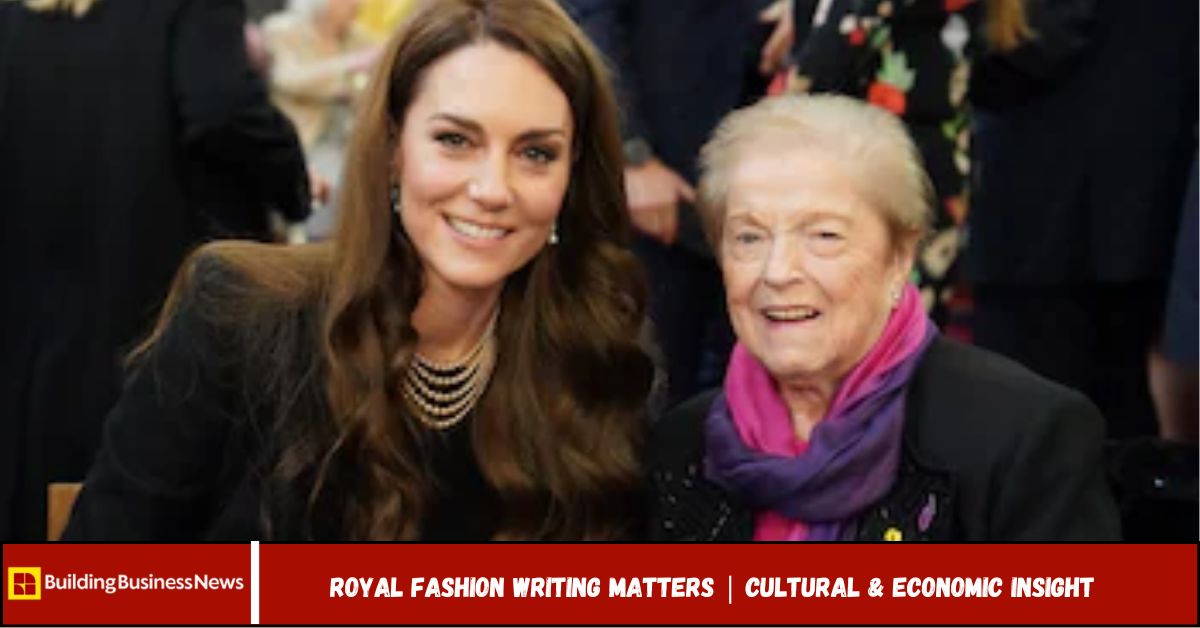Royal fashion writing isn’t just about gowns and glam—it’s about symbolism, diplomacy, economics, and influence. While the Palace may discourage fashion commentary, royal clothing tells stories about power, tradition, and modern values. This article explores why documenting royal fashion choices is serious cultural reporting, not tabloid fluff.
The Princess of Wales Knows Her Style Draws Eyes—But It’s Her Causes That Deserve Focus
The Princess of Wales has spent over a decade building a meaningful royal role—championing causes like mental health and early childhood development. And yet, her outfits often attract more headlines than her initiatives. It’s understandable she might want to shift the spotlight from her wardrobe to her work.
Still, fashion and purpose aren’t mutually exclusive. Her style doesn’t overshadow her mission—it amplifies it. Even as the Palace attempts to steer coverage toward substance over style, the reality remains: what the Princess wears sparks conversation, and that conversation can carry her message further than words alone.
Is Fashion Commentary About Royals Really Necessary?
When the Palace downplays the significance of royal fashion, it’s not just discouraging outfit commentary—it’s ignoring a powerful form of communication. Clothing worn by royals isn’t random; it’s deliberate, strategic, and often deeply symbolic.
So, why does fashion reporting matter? Because it reveals:
- Cultural identity and diplomatic signals
- Economic impact through fashion trends
- Shifting social values and public perception
- The visual language of power
In the following sections, we’ll uncover how royal fashion operates beyond vanity—and why writing about it serves the public interest.
1. Royal Clothing Is a Visual Language of Power
Throughout history, monarchies have used clothing to communicate status, wealth, and authority. That tradition hasn’t disappeared—it’s simply evolved. Today’s royal wardrobes still speak volumes.
What They Wear Tells You:
- Their values (sustainability, tradition, inclusivity)
- Their allegiance (local designers, national colors)
- Their message (soft diplomacy or public reassurance)
A simple coat choice or brooch can be a subtle nod to a country, a cause, or a political statement. Fashion becomes policy—without words.
2. Royal Fashion Fuels Economic Impact
Far from being trivial, royal fashion influences global markets. When a duchess or princess wears a particular designer, sales often spike within hours.
This phenomenon includes:
- The “Kate Effect” – where clothing worn by Catherine, Princess of Wales, sells out almost instantly
- Boosts to small and emerging brands featured in royal outfits
- Increased consumer trust in local fashion industries, particularly in the UK and Commonwealth countries
Fashion reporting on these moments drives economic visibility and demand. It’s not just a trend—it’s commerce.
3. Style as Diplomacy and Cultural Signaling
When royals travel abroad, what they wear is a diplomatic tool. Clothing becomes a bridge between nations and cultures, often showing respect to the host country through:
- Local designers or fabrics
- National colors or traditional dress elements
- Symbols that align with historical ties
This soft power approach enhances goodwill, cultural respect, and global image-building—all through fashion. Documenting it helps decode the strategy.
4. The Palace’s View—and Why It’s Misguided
The Palace often prefers to downplay fashion narratives, encouraging focus on the royal family’s charitable work and official duties. While that work is important, style and substance aren’t mutually exclusive.
Why discouraging fashion coverage is problematic:
- It diminishes the cultural value of visual storytelling
- It ignores the deliberate messaging within fashion choices
- It underestimates the public’s interest in symbolism and context
Fashion doesn’t distract from duty—it enhances and amplifies it.
5. How to Write About Royal Fashion Responsibly
Not all fashion writing is fluff. The best royal fashion journalism provides depth, context, and critical insight.
Key principles for smart coverage:
- Focus on intent: Why this look, why now?
- Avoid objectification: Don’t reduce women to what they wear.
- Contextualize: Link outfits to events, messages, and cultural references.
- Prioritize craftsmanship and design: Celebrate the artistry behind the looks.
Responsible reporting brings out the layers behind a single ensemble, making fashion a lens for broader understanding.
6. Why Ignoring Royal Fashion Is a Missed Opportunity
Turning a blind eye to royal fashion does more harm than good. It means:
- Missing economic stories about emerging brands and industry impact
- Overlooking political symbolism embedded in clothing
- Ignoring how fashion helps shape legacy and public image
Fashion is one of the most visible and accessible ways royals connect with the public. To ignore it is to miss a critical part of the conversation.
FAQs
1. Why is writing about royal fashion important?
It decodes symbolism, highlights economic impact, and captures soft diplomacy.
2. Isn’t fashion coverage just shallow entertainment?
Not when done well. It’s cultural journalism with real-world relevance.
3. Does royal clothing really affect public behavior?
Yes. Royal style influences trends, brand popularity, and even shopping habits.
4. Why does the Palace resist fashion coverage?
They often see it as distracting from official duties, but that view overlooks the power of visual messaging.
5. How can fashion signal diplomacy?
Through color choices, national symbols, and local designer selections during official engagements.
6. What’s the right way to cover royal fashion?
By focusing on meaning, intention, and broader social, cultural, and economic context—not just aesthetics.
Conclusion:
Clothing isn’t just what royals wear—it’s how they communicate. Whether it’s signaling diplomacy, elevating national designers, or shaping public perception, their style choices carry weight. Ignoring this is not journalistic integrity—it’s a blind spot.
Writing about royal fashion isn’t frivolous. It’s factual, analytical, and culturally essential. When we interpret royal clothing thoughtfully, we uncover stories about society, power, and progress—woven into every seam.

